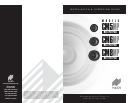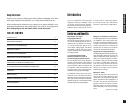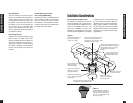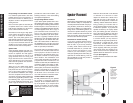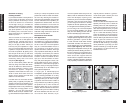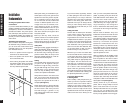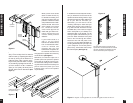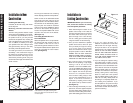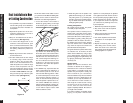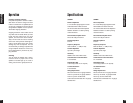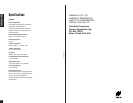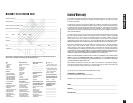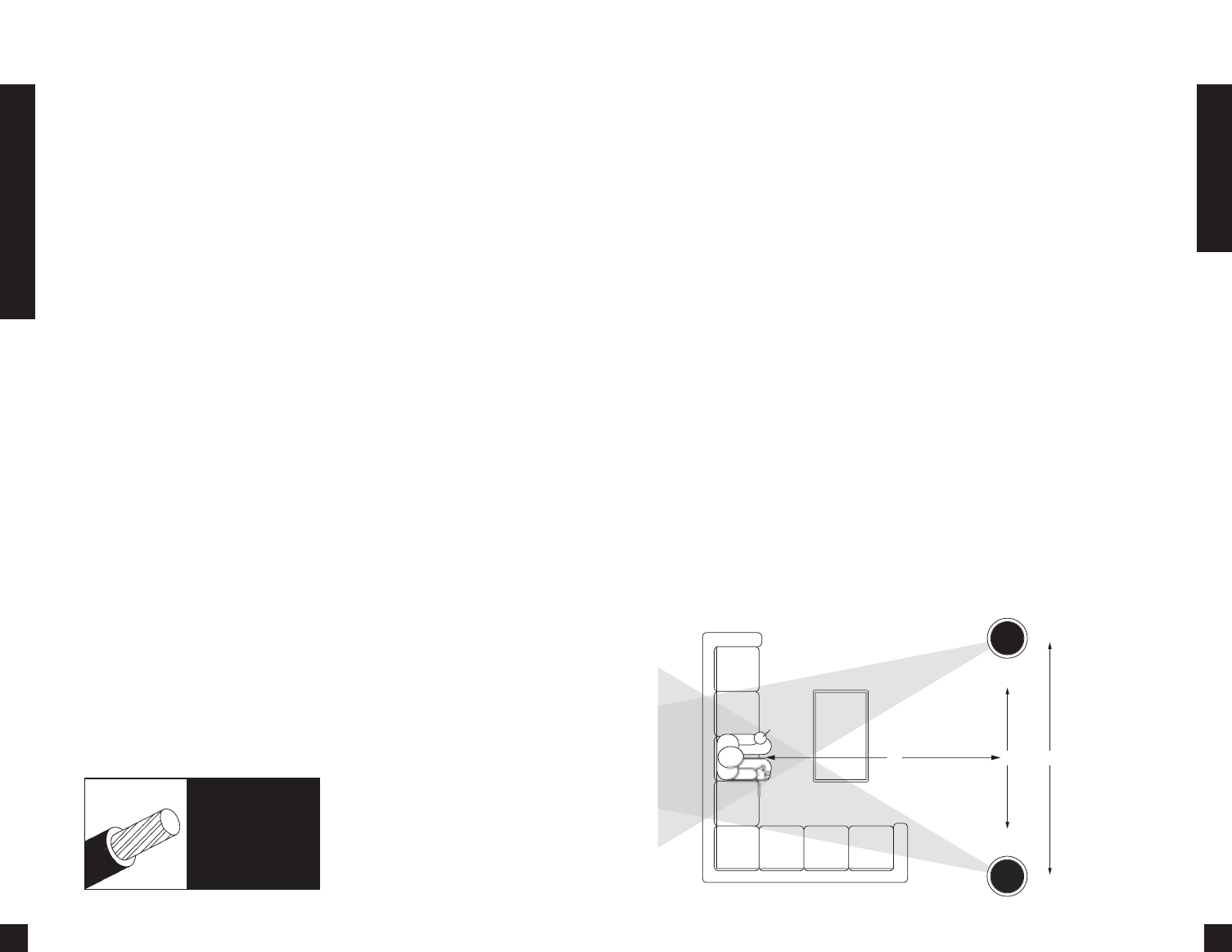
6
Introduction
Although the MP Multipurpose speakers
have extensive ability to compensate for
unusual placements with their unique piv-
oting tweeters, placement is still the pri-
mary tool for satisfying your particular lis-
tening needs. In the following section, we
discuss how speakers should be placed
and how tweeters should be directed and
how the acoustic fine-tuning switches
should be set for different purposes.
Placement for Critical Listening
If you like to imagine that the band or
orchestra is playing in front of you as you
listen to music, or you are very conscious
of clarity, detail and the textures of the
individual instruments, or you listen criti-
cally to movie soundtracks or music
videos in your home theater, you will
need your speakers placed so that they are
optimized for critical listening. Here are
some guidelines to make the process of
placement quick and easy.
Make sure the sound will not be blocked
or reflected off of furniture or other
objects. You should have a direct line of
sight with the front of the speaker. To
determine the best position, measure the
“listening” distance between the ideal lis-
tening position (your favorite chair or
couch) and the location in which you plan
to install the speakers. Try to place the
speakers so that they are equally distant
from your listening spot and at least one
half of the listening distance apart (this
maintains a large pleasant stereo “image”).
In home theater applications where there
is a center channel you may choose to
space the left and right main speakers far-
ther apart for a “bigger than life” sound
with Dolby
®
encoded movies and TV
shows. However, for combined music and
movie usage stay within the good place-
ment zone for music. For example; if you
are ten feet back from the speakers, the
speakers should be between five and ten
feet apart (See Figure 4).
Tweeters should be directed at the listen-
ing position.
Speaker Placement
10'
5' 10'
Figure 4
In this example,
the speakers
could be
placed from
five to 10 feet
apart, since the
listener is 10
feet back from
the speakers
Direct tweeter
towards listener
Direct tweeter
towards listener
Critical
Listening
Position
Speaker Placement
Incorporating a Local Volume Control
In a multiroom system there is one indis-
pensible device for true convenience—a
local volume control. It enables you to
adjust the volume of the speakers without
leaving the room.
Plan to wire the system so that each pair
of speakers has its own volume control
built into the wall (think of a volume con-
trol as a dimmer switch for sound).
Niles makes a wide range of high perfor-
mance indoor and outdoor volume con-
trols. They are available in Standard or
Decora
®
style cover plates (just like your
light switches and dimmers). Volume con-
trols are connected in line with the speak-
er, so you must connect the wire from the
amplifier to the volume control and then
from the volume control to the speaker.
Speaker Wire
Use 2-conductor speaker wire when con-
necting MP Multipurpose speakers to your
receiver or amplifier. For most applica-
tions, we recommend you use 16 or 18
gauge stranded wire. For wiring runs
longer than 80 feet we recommend 14
gauge stranded wire. The no-strip termi-
nals of the MP speakers will accommo-
date 12 to 18 gauge wire.
When you run wire inside walls, special
jacketing (CL-2 or CL-3) is required to
both protect the wire and for fire preven-
tion. In some areas conduit is required.
For a trouble-free installation, low voltage
wire such as speaker wire must be run in
accordance with the National Electrical
Code and any applicable provisions of the
local building code. If you are unsure of
the correct installation techniques, wire
jacket or type of conduit to use, consult a
professional audio/video installer, your
building contractor, or the local building
and inspection department.
Incorporating Remote Control
If your stereo system operates with a wire-
less Infrared (IR) remote control, consider
the advantages of installing a Niles Infrared
Extender System. Niles manufactures a
number of congealable IR sensors and wall
mounted keypads which send a copy of
your hand-held remote command via a
wire to your main equipment location,
where it is repeated to your stereo system.
The wire is typically installed with the
speaker wire, since the speaker signal and
the IR signal will not interfere with each
other. This makes almost no difference to
the installation time, and the cost of the
recommended IR control cable (West Penn
D291 or equivalent) is reasonable.
The correct routing for IR control cable is
to home run an IR control cable from the
main equipment location beside the
speaker wire to the planned volume con-
trol location; and then on to the proposed
sensor location. The combination of IR
control cable and speaker wire enables a
programmable Niles IntelliPad
®
to be
installed at a later date (the IntelliPad has a
convenient speaker mute feature in addi-
tion to automating and controlling your
stereo system). An IR sensor is best placed
where it is convenient for you to point the
hand-held remote. Both an IntelliPad and
an IR sensor can be connected in one
room with one home run IR control cable.
Insulation Behind The Speaker
For best performance from your speakers
lay a batten of fiberglass insulation
(example: R-19 un-batted insulation) on
top of the speaker. Try to keep the same
amount of insulation for each speaker,
particularly in the same room, for consis-
tent bass response.
5
Installation Considerations
TECH TIP
Wire size is expressed by
its AWG (American Wire
Gauge) number.The lower
the number, the larger the
wire, i.e. 12AWG isphysi-
cally larger than 14AWG.



